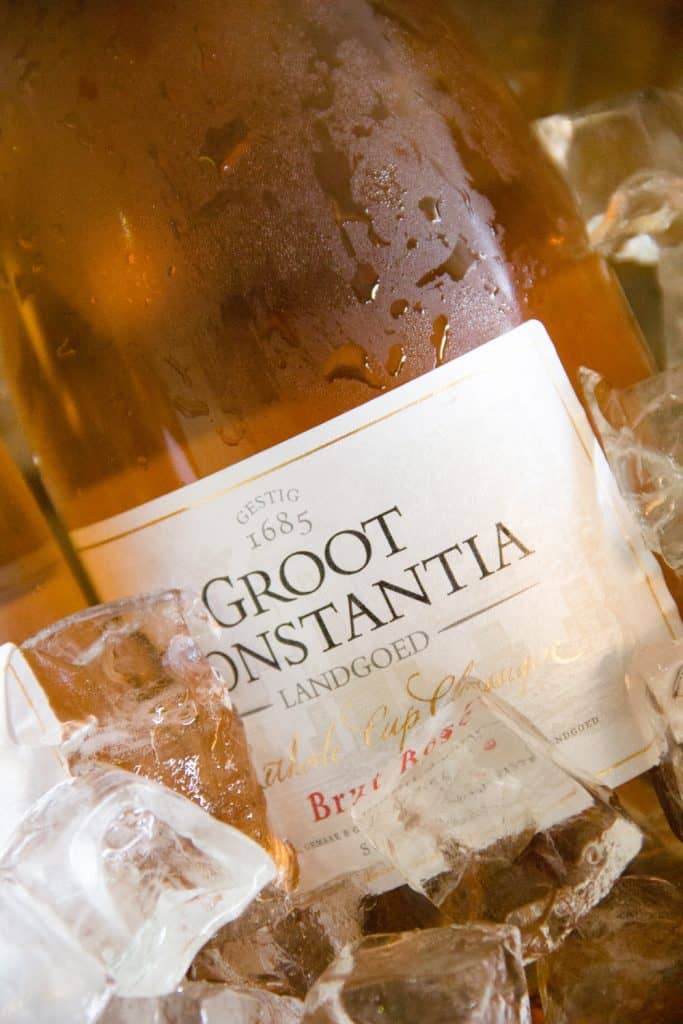
The 19th of October is World Champagne Day. Although here in SA, we refer to our locally produced version as Methode Cap Classique (MCC), as only sparkling wines made in the Champagne region of France can be labelled under that name.

To accompany your glass of chilled bubbly, the Groot Constantia Wine Estate, South Africa’s oldest wine-producing farm, have shared some interesting facts about this much loved beverage that is synonymous with celebrations and good times.
- Champagne was created by accident – It originated in a cold area in France and this cold weather would interrupt the fermentation process. When warmer weather returned the fermentation process would start again – resulting in fizzy wine. Winemakers would try and halt this secondary fermentation process to no avail and thus, Champagne was born.
- Specially shaped bottles to stop exploding – In the early days of Champagne, normal wine bottles were used to store the Champagne. These bottles were not designed to withstand the pressure of the wine from the second fermentation and they kept exploding. The pressure in a bottle of bubbly is around three times the amount of pressure in an average car tyre.It is estimated that at least 90% of the bottles burst. This is why champagne bottles have a deeper indentation in the bottom than other wine bottles.
- Bubble trains – A typical bottle of champagne has around 49 million bubbles with 30 additional bubbles created each second. These bubble trains, called collarets, are the strings of bubbled beads trailing up the glass once you have poured it.
- Watch out! A popping champagne cork is more dangerous than you think! You are more likely to be killed by a champagne cork than a poisonous spider as it reaches up to 64km/hour.
- Record-breaking vintage. The oldest bottle of Champagne was found in 2010 in the Baltic Sea. It was among a horde of 167 bottles of bubbles that had aged almost to perfection. Among them was a 170-year-old bottle of Veuve Clicquot which was untouched by the ocean around it. This bottle was sold at an auction for 30,000 Euros, which set a new world record!
- Get the fizz back. If your unfinished bottle of bubbly looks a bit flat by the end of the night drop a raisin into the bottle to restore the effervescence.
- The perfect glass. With its small surface area and elongated body, the flute encourages the long, slow release of bubbles, so you’ll enjoy your fizz for longer. The tulip has the slimmer base and neck of the flute but widens out in the middle – so it develops and maintains bubbles, and focuses the aromatics towards your nose. All have stems, so that your hand doesn’t affect the temperature of the bubbly.
The facts on MCC
Boela Gerber, winemaker at Groot Constantia explains that MCC is made using grapes that are low in sugar. “Similar to white wine, MCC grapes are pressed and then fermented to produce a low alcohol wine. But when the wine is ready for bottling, sugar and yeast is added and the wine-sugar-yeast mixture is bottled. The carbon dioxide in MCC is formed during the second fermentation in the bottle. The wine is left with the yeast lees in bottle for at least one year, often two three years, before the sediment is removed in a process called degorgement to get the wine for the market.”
“The Groot Constantia Method Cap Classique Brut Rose is highly recommended to celebrate Champagne Day and is made with 90% Pinot noir grapes and 10% Chardonnay grapes. Our MCC has a delicate salmon pink colour and is yeasty and doughy in characters on the nose with refreshing notes of stone fruit with crisp acidity on the palate,” says Gerber.
Enjoy on its own or with summer salads, deliciously fresh oysters and grilled fish dishes. Cheers!

Ends


